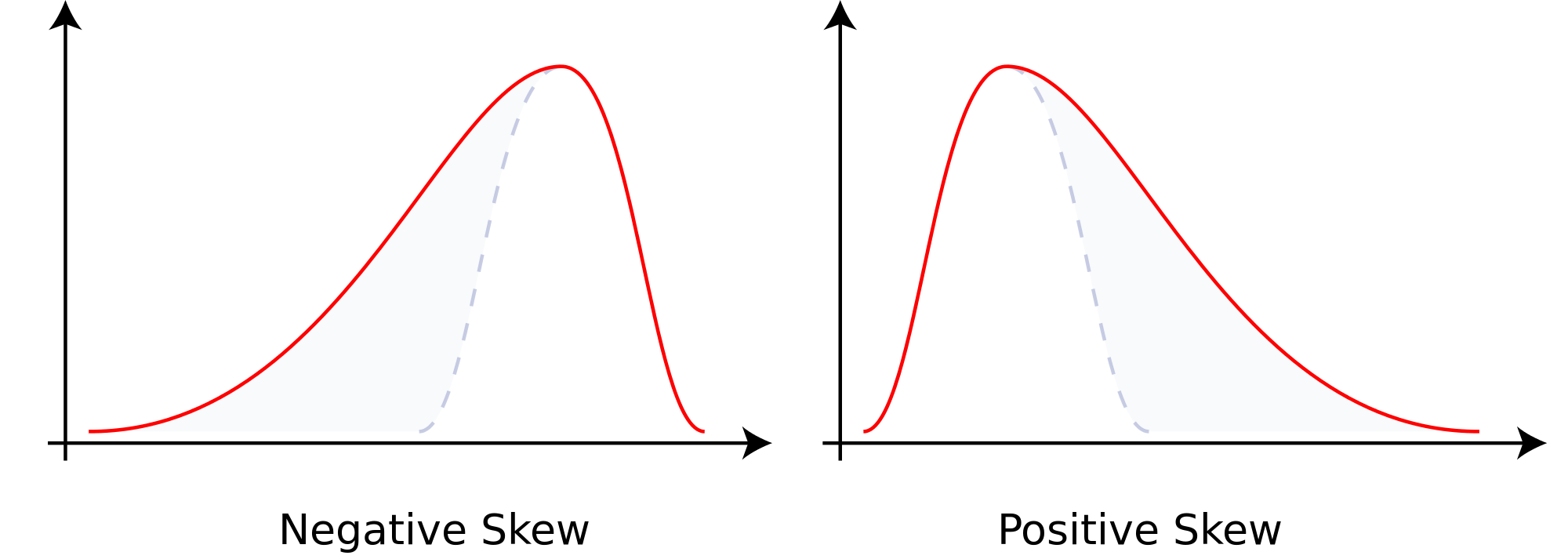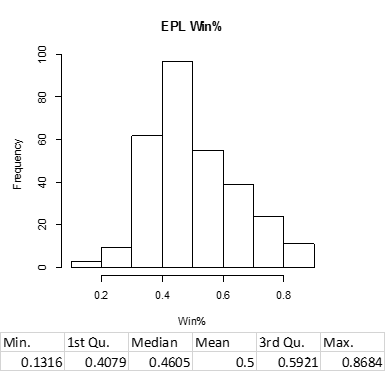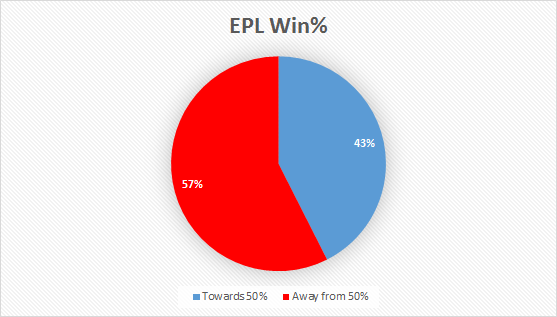 This article was inspired by a recent post by John Urschel, a mathematician/American football player for the Baltimore Ravens. He's written a few articles now, and such a unique blend of professions has lead to great insight in the sport, something we can hope for but are maybe unlikely to see from our brand of professional footballers anytime soon. www.theplayerstribune.com/john-urschel-ravens-parity-ideal Obviously I recommend reading his article first since it's the basis of this piece but, to summarise, he looks into the parity of the 4 major league sports in America (NBA, NFL, MLS, and NHL) also known as the Big 4. He does this by analysing 2 main factors in order to distinguish how "fair" each league is:
This article was inspired by a recent post by John Urschel, a mathematician/American football player for the Baltimore Ravens. He's written a few articles now, and such a unique blend of professions has lead to great insight in the sport, something we can hope for but are maybe unlikely to see from our brand of professional footballers anytime soon. www.theplayerstribune.com/john-urschel-ravens-parity-ideal Obviously I recommend reading his article first since it's the basis of this piece but, to summarise, he looks into the parity of the 4 major league sports in America (NBA, NFL, MLS, and NHL) also known as the Big 4. He does this by analysing 2 main factors in order to distinguish how "fair" each league is:
- Distribution of wins
- Year on year reversion to the mean
Both of which I'm going to replicate using Premier League data. Distribution of wins Mr. Urshcel found that the "Big 4" Major league sports in the US all had a negative skew of win percentage. In this context this means that "there are more above-average than below-average teams, but more very bad teams than very good ones."  Let's see how the distribution from the Premier League looks. Data is taken since the 2000/2001 season and I've set boundaries as right open (a <= x < b). I have counted draws as half a win so that the data still has a mean of 50%. I also felt like ignoring draws would be ignoring the information that on the day the two teams were relatively evenly matched, and it turns out that the results are the same whether or not draws are included.
Let's see how the distribution from the Premier League looks. Data is taken since the 2000/2001 season and I've set boundaries as right open (a <= x < b). I have counted draws as half a win so that the data still has a mean of 50%. I also felt like ignoring draws would be ignoring the information that on the day the two teams were relatively evenly matched, and it turns out that the results are the same whether or not draws are included.  Unlike the Big 4 leagues, the Premier League has a noticeable positive skew with a fairly wide spread of records between teams. It follows that the distribution of average and extreme teams is also different.
Unlike the Big 4 leagues, the Premier League has a noticeable positive skew with a fairly wide spread of records between teams. It follows that the distribution of average and extreme teams is also different.  The majority of Premier League teams are actually slightly below average, and there are more "very good" teams than "very bad" teams. It seems like the level of fairness in the premier league is opposite of what has been attained in the major leagues. Instead of teams being highly competitive in fighting to become elite, Premier league teams tend to be highly competitive in fighting to avoid relegation. The chart shows that each year there are generally 2 or 3 "elite" teams battling for the title, whereas on average you would expect less than 1 team that could be considered significantly worse than the rest of the lower half. I'll have to test the for similarities in the other top European leagues but this type of positive skew seems like it would roughly fit the other top 3 leagues, with each seeming to have 2 or 3 elite teams and the majority of teams being slightly below average. Year on year reversion to the mean In a fair league you would, over time, expect teams to revert to the mean more often than not, and John Urschel provides evidence of this in each of the Big 4 leagues. In the Premier League however this is not the case.
The majority of Premier League teams are actually slightly below average, and there are more "very good" teams than "very bad" teams. It seems like the level of fairness in the premier league is opposite of what has been attained in the major leagues. Instead of teams being highly competitive in fighting to become elite, Premier league teams tend to be highly competitive in fighting to avoid relegation. The chart shows that each year there are generally 2 or 3 "elite" teams battling for the title, whereas on average you would expect less than 1 team that could be considered significantly worse than the rest of the lower half. I'll have to test the for similarities in the other top European leagues but this type of positive skew seems like it would roughly fit the other top 3 leagues, with each seeming to have 2 or 3 elite teams and the majority of teams being slightly below average. Year on year reversion to the mean In a fair league you would, over time, expect teams to revert to the mean more often than not, and John Urschel provides evidence of this in each of the Big 4 leagues. In the Premier League however this is not the case.  It's a clear case of "The rich get richer and the poor get poorer". Ideally a league would want at least 50% of teams reverting to the mean or else disparity can occur between the top and lower tiers of the league, which seems to have occurred here. The differing structure of the Premier League, mainly the prevalence of relegation, does influence the numbers slightly. Each season 3 teams that probably would have reverted to the mean don't get the chance to due to relegation. Even if you assume all 3 relegated teams will definitely improve next year then the percentage of teams that revert to the mean would still be <52%, only slightly better than if the league was completely random and still significantly less than the Big 4. Relegation itself though is a cause of disparity, the fact that that the worst 3 teams get relegated only augments the inequality in the league, since teams that perform poorly may not even get a chance to improve. Pair this with the financial reward of playing in Europe, given to the teams at the top of the table, and it's easy to see why the spread of success amongst Premier League teams is nothing like that which we see in America. I think this shows how the introduction of salary caps, drafts etc. have helped maintain relative parity within the Big 4 leagues, and how much of an unbalance can occur if there is no real effort made in maintaining parity. There have been a few attempts to create a more level playing field, with TV money providing some of the poorer teams with an increased opportunity for investment in the club, but it is no where near enough if parity is to be seen as a target for the Premier League. A tiered football league may create enjoyment for teams climbing up the ladder but the current system means no team has a chance at becoming an elite club without a large cash injection from outside investors. I'm not sure if the majority of fans are happy with the structure and level of equality within the Football League but one things for sure, the Premier League is certainly not a level playing field.
It's a clear case of "The rich get richer and the poor get poorer". Ideally a league would want at least 50% of teams reverting to the mean or else disparity can occur between the top and lower tiers of the league, which seems to have occurred here. The differing structure of the Premier League, mainly the prevalence of relegation, does influence the numbers slightly. Each season 3 teams that probably would have reverted to the mean don't get the chance to due to relegation. Even if you assume all 3 relegated teams will definitely improve next year then the percentage of teams that revert to the mean would still be <52%, only slightly better than if the league was completely random and still significantly less than the Big 4. Relegation itself though is a cause of disparity, the fact that that the worst 3 teams get relegated only augments the inequality in the league, since teams that perform poorly may not even get a chance to improve. Pair this with the financial reward of playing in Europe, given to the teams at the top of the table, and it's easy to see why the spread of success amongst Premier League teams is nothing like that which we see in America. I think this shows how the introduction of salary caps, drafts etc. have helped maintain relative parity within the Big 4 leagues, and how much of an unbalance can occur if there is no real effort made in maintaining parity. There have been a few attempts to create a more level playing field, with TV money providing some of the poorer teams with an increased opportunity for investment in the club, but it is no where near enough if parity is to be seen as a target for the Premier League. A tiered football league may create enjoyment for teams climbing up the ladder but the current system means no team has a chance at becoming an elite club without a large cash injection from outside investors. I'm not sure if the majority of fans are happy with the structure and level of equality within the Football League but one things for sure, the Premier League is certainly not a level playing field.